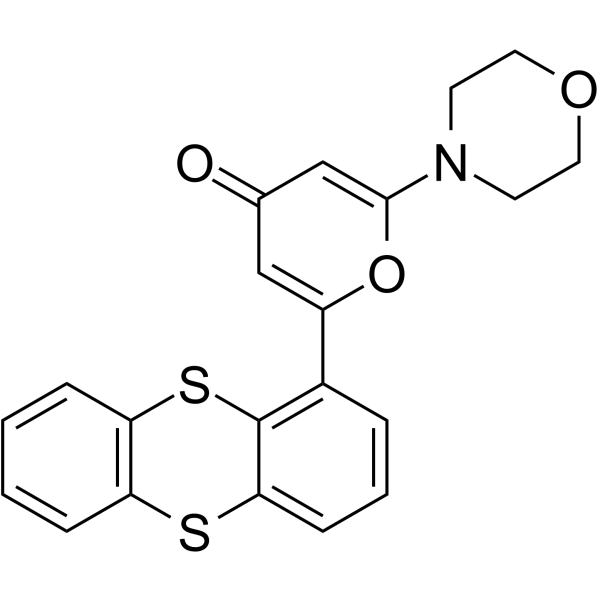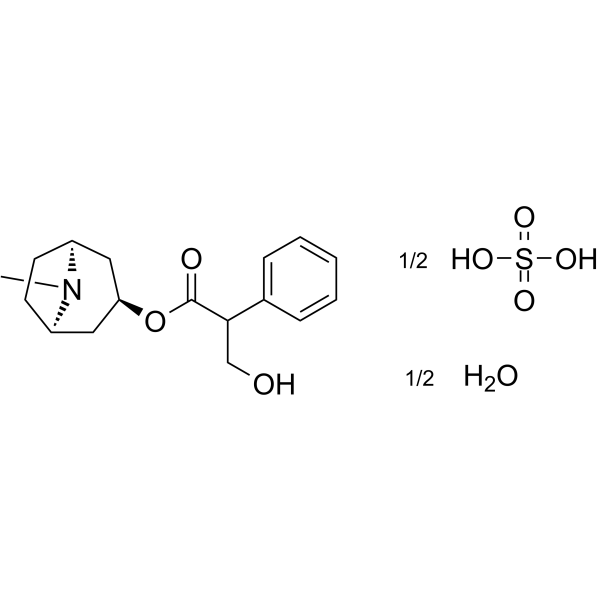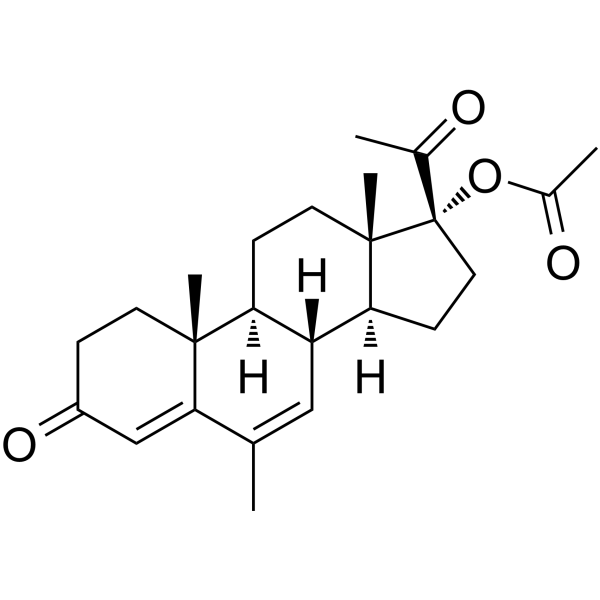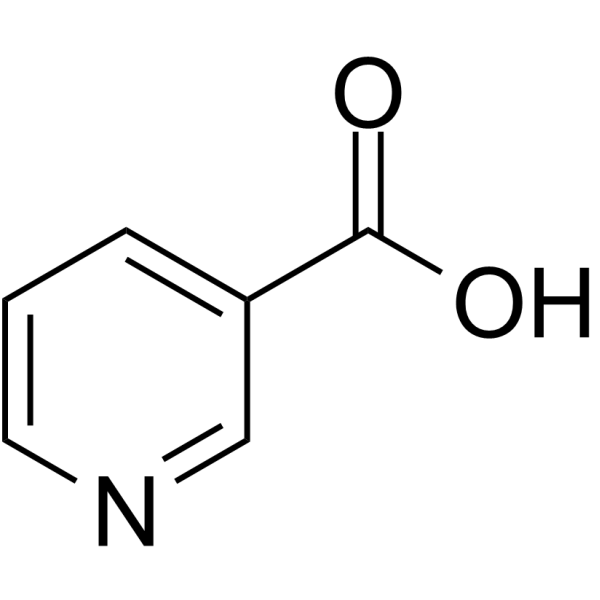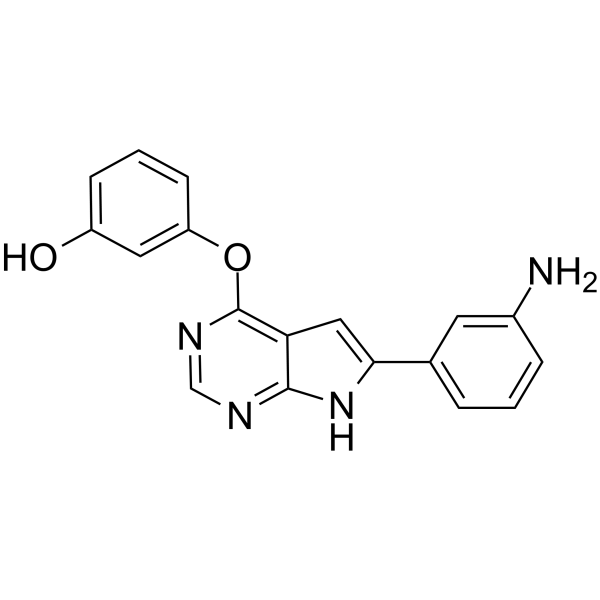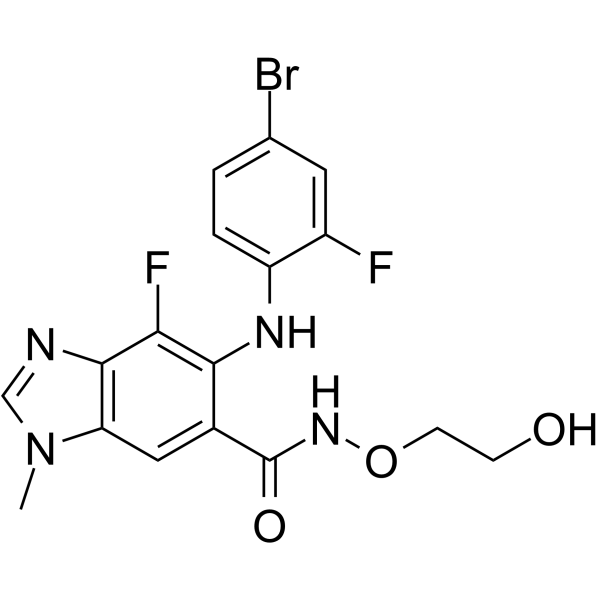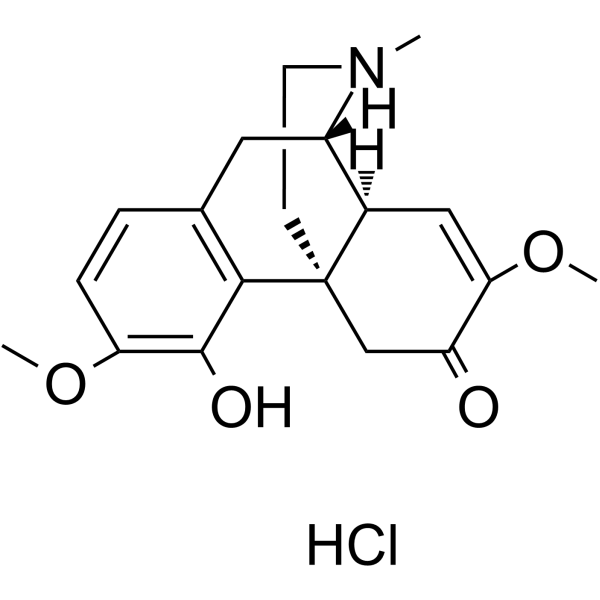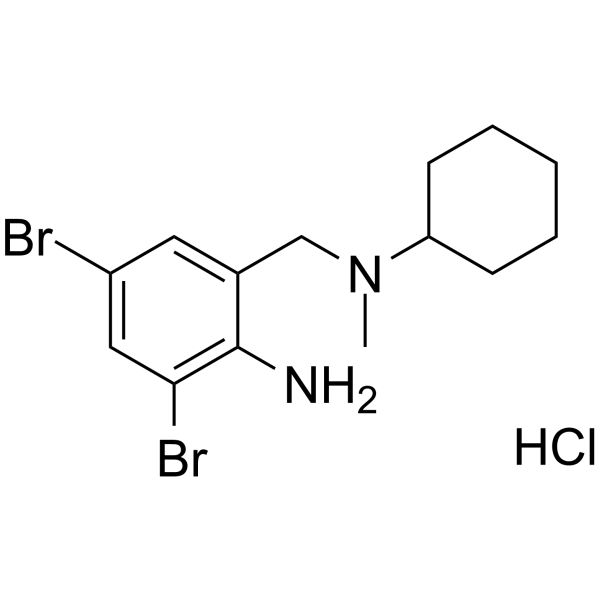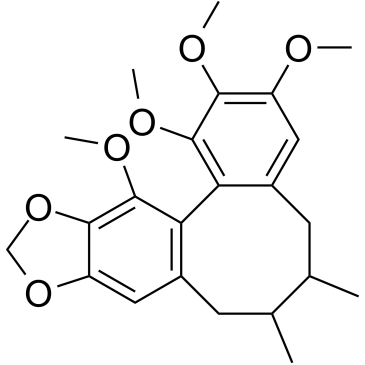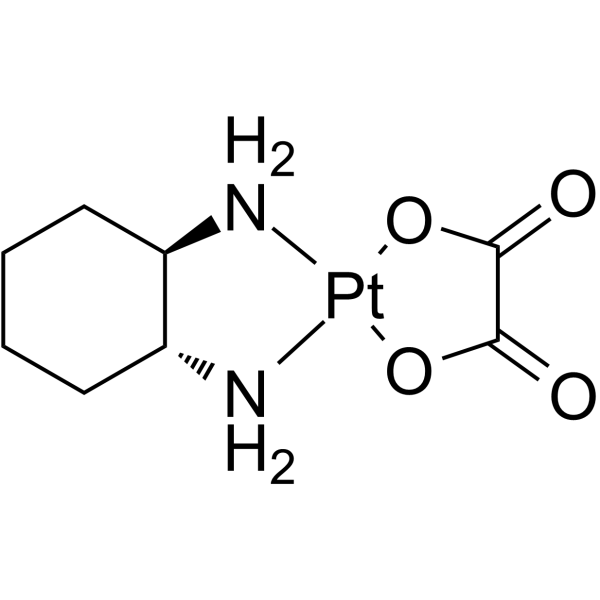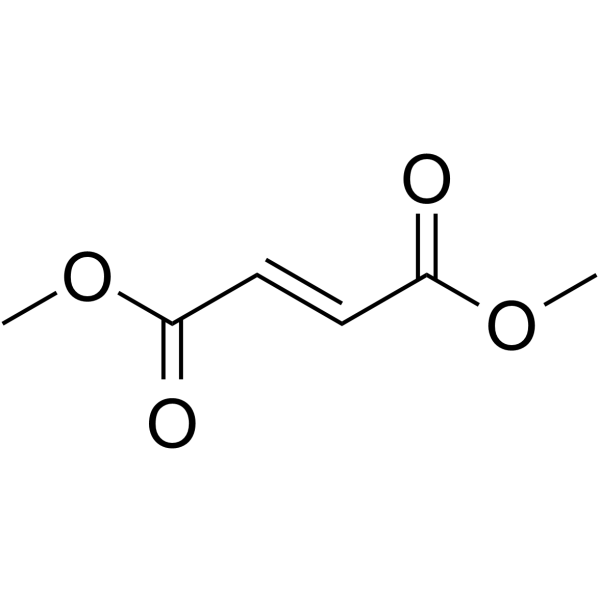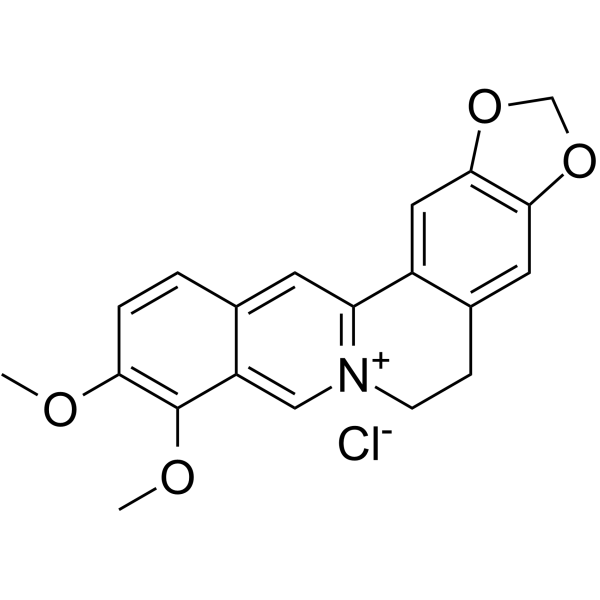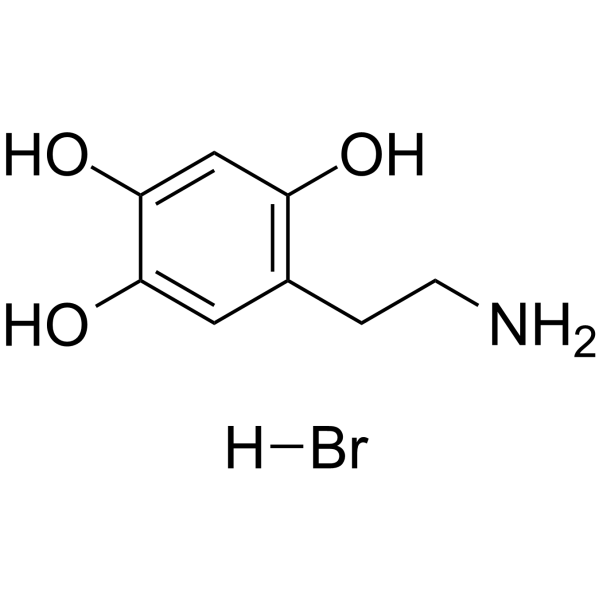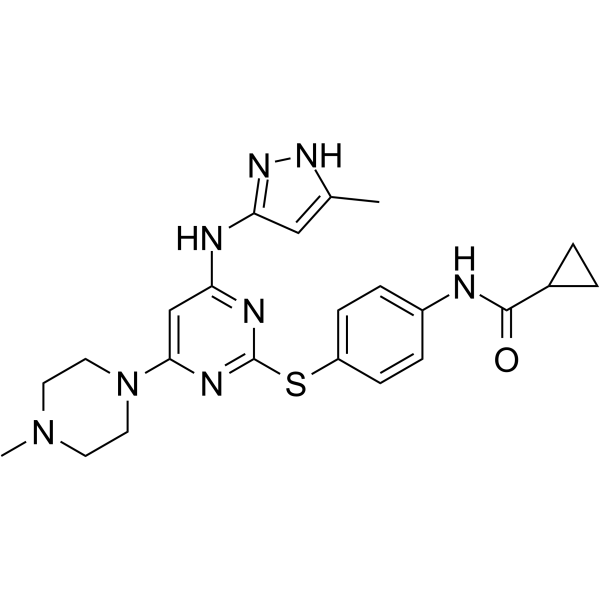|
BP12758
|
KU-55933
|
|
|
|
|
KU-55933 (ATM Kinase Inhibitor) is a potent and specific ATM inhibitor.
|
|
BP12759
|
Atropine sulfate monohydrate
|
|
|
|
|
Atropine sulfate monohydrate, the sulfate salt of atropine, is a competitive muscarinic acetylcholine receptor antagonist.
|
|
BP12760
|
Megestrol acetate
|
|
|
|
|
Megestrol acetate is a progestogen with actions and uses similar to those of the progestogens in general. Megestrol acetate also has anti-androgenic properties. It is given by mouth in the palliative treatment or as an adjunct to other therapy in endometrial carcinoma and in breast cancer. Megestrol acetate has been approved to treat anorexia and cachexia.
|
|
BP12761
|
Niacin
|
|
|
|
|
Niacin is a water-soluble vitamin belonging to the vitamin B family, which occurs in many animal and plant tissues, with antihyperlipidemic activity. Niacin is converted to its active form niacinamide, which is a component of the coenzymes nicotinamide adenine dinucleotide (NAD) and its phosphate form, NADP.
|
|
BP12762
|
TWS119
|
|
|
|
|
TWS119 is a GSK-3β inhibitor; capable of inducing neuronal differentiation
|
|
BP12763
|
Binimetinib
|
|
|
|
|
Binimetinib (MEK162, ARRY-162, ARRY-438162) is an orally available inhibitor of MEK1/2 (IC50: 12 nM) in a cell-free assay.
|
|
BP12764
|
Sinomenine hydrochloride
|
|
|
|
|
Sinomenine hydrochloride is extracted from Sinomenium Acutum Rehderett Wilson.
|
|
BP12765
|
Bromhexine hydrochloride
|
|
|
|
|
Bromhexine hydrochloride is a mucolytic agent used in the treatment of respiratory disorders associated with viscid or excessive mucus.
|
|
BP12766
|
Schisandrin B
|
|
|
|
|
Schisandrin B has an antioxidant effect on rodent liver and heart.
|
|
BP12767
|
Schizandrin A
|
|
|
|
|
|
|
BP12768
|
Procainamide hydrochloride
|
|
|
|
|
Procainamide Hydrochloride is the hydrochloride salt form of procainamide, an amide derivative exhibiting class 1A antiarrhythmic property and analog of procaine. Procainamide hydrochloride reversibly binds to and blocks activated (open) voltage-gated sodium channels, thereby blocks the influx of sodium ions into the cell, which leads to an increase in threshold for excitation and inhibit depolarization during phase 0 of the action potential.
|
|
BP12769
|
Oxaliplatin
|
|
|
|
|
Oxaliplatin inhibits DNA synthesis by conforming DNA adducts.
|
|
BP12770
|
TOMATIDINE HYDROCHLORIDE
|
|
|
|
|
A steriodal alkaloid structurally similar to Cyclopamine but does not inhibit hedgehog pathway. May be used as a negative control for Cyclopamine and KAAD-Cyclopamine. Tomatidine protects against muscle atrophy and boosting muscle growth.
|
|
BP12771
|
Sulfacetamide sodium monohydrate
|
|
|
|
|
Sulfacetamide sodium monohydrate is a sulfonamide antibiotic. It has been investigated for the treatment of rosacea and pityriasis versicolor.
|
|
BP12772
|
Dimethyl fumarate
|
|
|
|
|
Dimethyl fumarate, a fumarate derivative, is used as antiinflammatory and immunomodulatory agent.
|
|
BP12773
|
Turofexorate Isopropyl
|
|
|
|
|
Turofexorate Isopropyl (XL335) is a potent, selective, and orally bioavailable FXR agonist with EC50 of 4 nM
|
|
BP12774
|
Berberine chloride
|
|
|
|
|
Berberine hydrochloride is an alkaloid from Hydrastis canadensis L., Berberidaceae and also found in many other plants. It is relatively toxic to parenterally but has been used orally for various fungal and parasitic infections and an anti-diarrheal.
|
|
BP12775
|
Oxidopamine hydrobromide
|
|
|
|
|
Oxidopamine hydrobromide is a neurotransmitter dopamine antagonist.
|
|
BP12776
|
Sulfanilamide
|
|
|
|
|
Sulfanilamide can competitively inhibit bacterial enzyme dihydropteroate synthetase with IC50 of 320 μM.
|
|
BP12777
|
Tozasertib
|
|
|
|
|
MK-0457 is a pan-Aurora kinase inhibitor (Kis: 0.6/18/4.6 nM for Aurora A/Aurora B/Aurora C). It shows selectivity against more than 190 different kinases.
|
